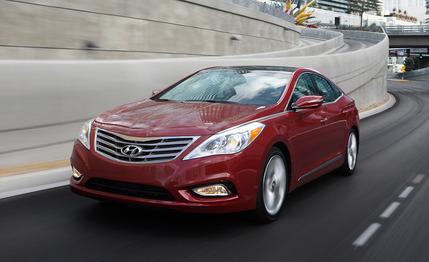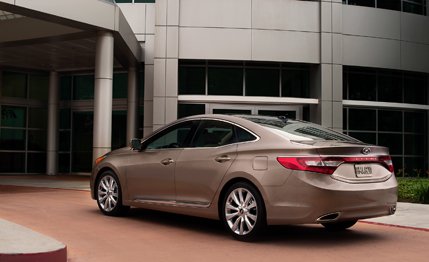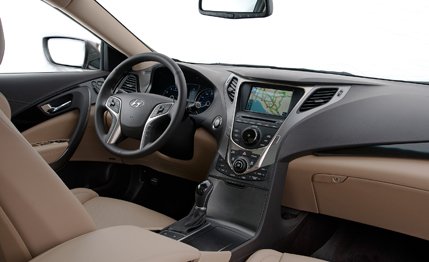
 First Drive Review
First Drive Review
It’s hard to believe Hyundai has been selling cars in this country for more than 25 years. Wasn’t it just yesterday that the first Excel—remembered more for its low price than its Giugiaro-penned exterior—hit our shores with a thud? Since then, the brand has grown dramatically, in both the scope and quality of its offerings.
Intent on competing hard in all segments, Hyundai felt underrepresented in the gap between the new Sonata and the Genesis sedan, Hyundai’s rear-drive offering for aspirational types who aren’t quite making Equus-level money yet. To wit: The base prices of the Elantra and Sonata sedans are separated by about $4500. The gap between the Sonata and the Genesis, however, is more than $14,000—financial territory the previous Azera had difficulty defending. Enter the all-new-for-2012, $32,875 Azera—a reasonably priced front-drive automotive statement that says of its owner to the world, “I needed a car, and Hyundai sells cars.”


The Azera’s exterior measures 193.3 inches long and 73.2 inches wide, neatly splitting the difference between the Sonata (189.8/72.2) and the Genesis (196.3/74.4). The exterior follows Hyundai’s “Fluidic Sculpture” design ethos and, lingo aside, is undeniably handsome. A chrome grille initiates the winged “in flight” theme that continues throughout the car, and a wraparound LED taillight treatment is—for the time being—unique to the Azera. Eighteen-inch wheels with 245/45 tires are standard.
Power-adjustable leather-upholstered front seats (standard), a well-located shifter, and the optional power tilting and telescoping wheel make short work of zeroing in on an optimal driving position. The dash pad spreads outward, wing-like from the center console, a continuation of the all-encompassing design theme. Driver and passenger have more room than they’ll ever need; our fully grown rear-seat occupant rode in complete comfort, even after we jacked the driver’s seat all the way back in a thinly veiled attempt to shatter his ankles. Heated front and rear seats, a backup camera, a navigation system, integrated Bluetooth, and Hyundai’s Blue Link telematics system all come standard; pony up an additional $4000 for the Technology package, and you’ll get 19-inch wheels, a tilt-and-slide sunroof, an Infinity audio system, ventilated front seats, and a power rear sunshade.
Struts with coil springs and a multilink independent rear setup team with disc brakes and standard ABS to provide a driving experience just as composed as that of any current Ford Taurus/Buick LaCrosse/Toyota Avalon sedan we’ve sampled recently. The Azera tracks straight, and its steering is precise but not particularly communicative for the segment. Its electrically assisted rack is capable of providing a force in the countersteer direction when the vehicle’s stability-control systems conclude that danger is imminent based on vehicle trajectory, road conditions, or simple operator buffoonery.


The only available powertrain in the Azera is a 3.3-liter V-6 lashed to a six-speed automatic transmission with a manual shifting mode and steering-wheel-mounted paddles. It’s smooth and quiet, revs willingly if not lustily, and shifts almost imperceptibly. Despite the presence of 293 horses, each driver in our group declared, “Needs more power!” within minutes of getting behind the wheel. Which is not to say it doesn’t have enough power for Azera owners. It just doesn’t have enough power for us; try not to confuse the two.
According to Hyundai, the Azera is selling “like crazy” in Korea. It will be in American showrooms in March, and we’re confident that dealers will have no trouble finding plenty of buyers thick in the middle life, looking for their automotive soul mate.